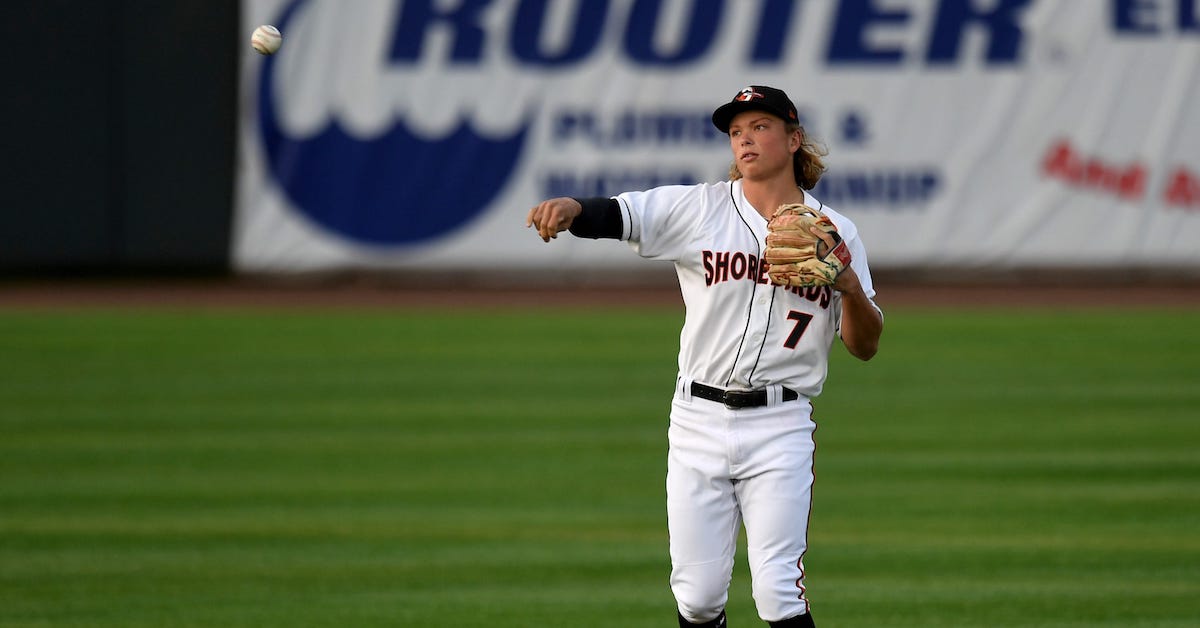Job Posting: Cleveland Guardians – Senior Platform Engineer
Senior Platform Engineer (Full-Stack / DevOps), Baseball Systems
Are you interested in joining the Cleveland Guardians’ thriving Baseball Systems team? We are an expanding department focused on creating innovative software tools and data solutions that directly impact the organization’s ability to acquire players, develop their skills, and optimize their performance. The products we build facilitate operations and enhance decision-making across all areas of the organization, and help answer questions such as “Which trades should we execute?”, “Who should we select with our next pick in the draft?”, and “How can we help players use data from yesterday’s game to improve?” If you enjoy working on large-scale data products, developing high-impact tools, and collaborating with talented individuals, we want to hear from you.
As a Senior Platform Engineer, you will maintain and improve the organization’s software development, deployment, and infrastructure processes, and support the development of user-facing products. This role requires strong DevOps and Full-Stack experience: you will leverage DevOps best practices, cloud technologies, Terraform, and container orchestration to ensure the team’s projects and systems run smoothly, and you will develop tooling, platform components, and user-facing products to improve our software solutions. We anticipate that, once DevOps processes are developed and established, this role will shift to have more of a focus on Full-Stack Development.
This is an exciting opportunity to join the Cleveland Guardians as a Senior Platform Engineer and contribute to the success of our organization by implementing efficient DevOps practices, managing cloud infrastructure, and ensuring reliable software delivery. Your technical expertise and passion for automation will play a vital role in maintaining a seamless experience for our Baseball Systems team and helping the Cleveland Guardians accomplish their ultimate mission of winning the World Series.
We prefer our employees (or teammates) reside in Cleveland, Ohio, but we will consider and discuss the possibility of remote work.
Key Responsibilities:
- DevOps Implementation: Collaborate with the development team to implement and evangelize efficient DevOps practices and workflows, including continuous integration, continuous delivery (CI/CD), and automated testing.
- Cloud Infrastructure Architecture: Design, automate, deploy, and monitor infrastructure and cloud management using tools like Terraform.
- Software Development: Build software for developers that will accelerate the development of cutting-edge baseball products and enable end users to make better, faster decisions that come with the day-to-day operations of running an MLB team.
- Deployment and Orchestration: Implement and manage deployment pipelines to automate software releases. Define best practices for containerizing and orchestrating applications for efficient and scalable deployments.
- Monitoring and Troubleshooting: Set up monitoring and alerting systems to proactively identify and resolve issues in the infrastructure and applications.
- Collaboration and Communication: Work closely with cross-functional teams, including developers, testers, information systems, and product managers, to ensure smooth collaboration and effective communication. Participate in team meetings and contribute to agile development practices.
Required Skills and Qualifications:
- Experience in DevOps practices, including CI/CD, automated testing, and infrastructure as code
- Full Stack Development experience with proficiency in at least one programming language (e.g., Python, JavaScript, C#, etc.)
- Experience in building and deploying cloud technologies (e.g., GCP, AWS, Azure, etc.)
- Hands-on experience with infrastructure provisioning and management using Terraform or similar tools
- Familiarity with containerization technologies (e.g., Docker)and orchestration frameworks (e.g., Kubernetes)
Preferred Qualifications:
- Proficiency in more than one development language
- Proficiency in CI/CD design and processes
- Experience with Terragrunt
- Experience in Google Cloud Platform (GCP)
Organizational Requirements:
- Reads, speaks, comprehends, and communicates English effectively
- Represents the Cleveland Guardians in a positive fashion to all business partners and the general public
- Ability to develop and maintain successful working relationship with members of the Front Office
- Ability to act according to the organizational values and service excellence at all times
- Ability to work with diverse populations and have a demonstrated commitment to social justice
- Ability to work extended days and hours, including holidays and weekends
- Ability to work in a complex and changing environment
The Cleveland Guardians are committed to developing and maintaining an environment that embraces all forms of diversity to enrich our core values, enhance our competitive position, strengthen our impact within our community, and foster a greater sense of belonging for our employees.
In this spirit, we know studies have shown that people from historically underserved groups – including women and people of color – are less likely to apply for jobs unless they believe they meet every one of the qualifications as described in a job description. We are most interested in finding the best candidate for the job and understand that candidate may bring certain skills and experiences to the role that are not listed in our job description, but that would add tremendous value to our organization. We would encourage you to apply, even if you don’t believe you meet every one of our qualifications described.
To Apply:
To apply, please follow this link.
The content in this posting was created and provided solely by the Cleveland Guardians.






